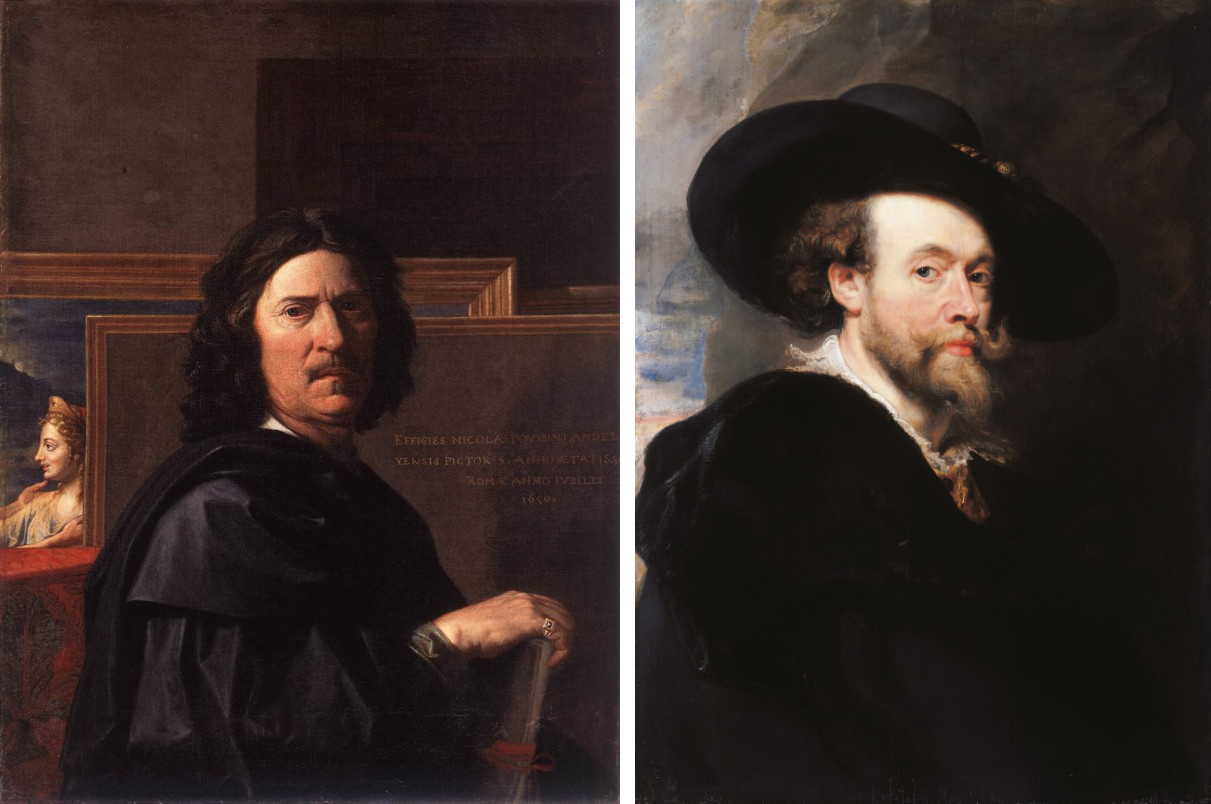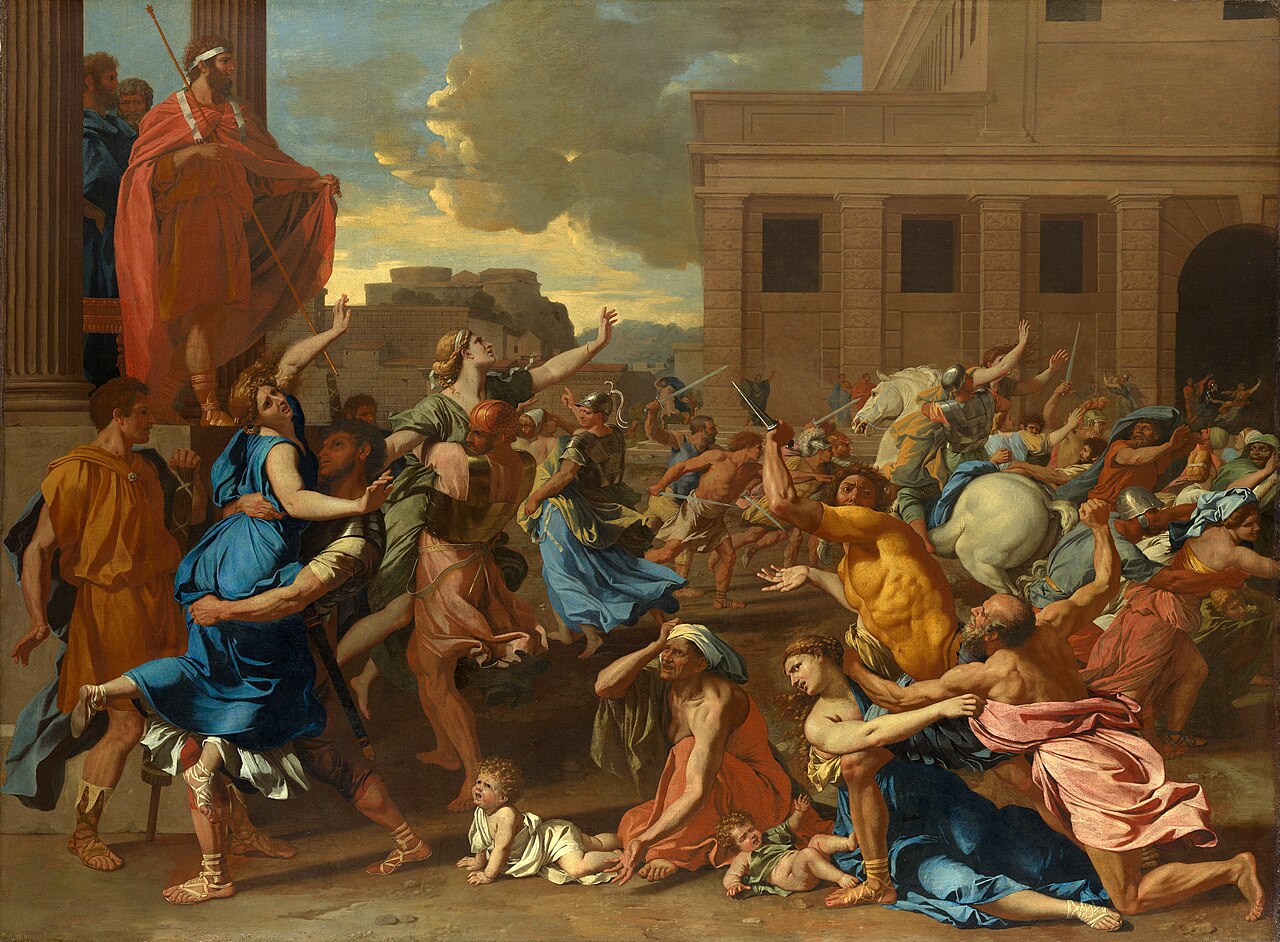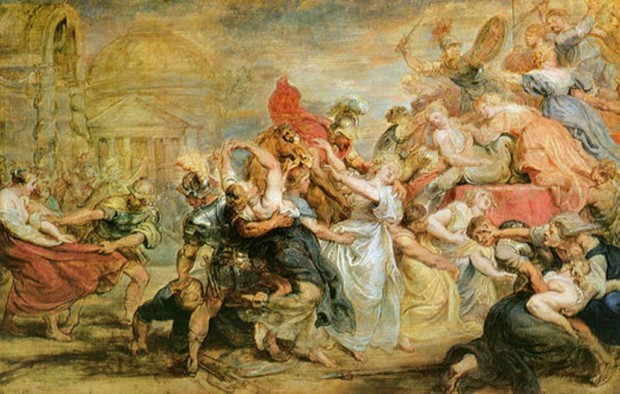Peter Paul Rubens in 10 Paintings
A Baroque master and portraitist of the royals, Peter Paul Rubens is probably best known for his often drama-filled religious and mythological...
Anna Ingram 30 May 2024
According to popular belief, there are only seven plot types in storytelling. Hence it is not surprising to find artists inspired by the same narrative simultaneously. This is certainly the case with the subject of the Abduction of the Sabine Women executed by both Nicolas Poussin and Peter Paul Rubens in 1635.
Nicolas Poussin (1594-1665) was a representative of classical French Baroque – a style which was far more classical and restrained, based on rational proportions and influenced by the Renaissance art. Conversely, Baroque art in the rest of Europe conveyed emotions, used voluptuous forms, strong contrast of light and dark, and dynamic composition. Flemish painter Peter Paul Rubens (1577-1640) was certainly a master of this style.

The story of how King Romulus of Rome abducted the Sabine women by force has fascinated artists for centuries. Through these two works, we can see how the 17th-century passion for storytelling is conveyed. Both painters tell the story from the moment when Romulus gave the order to abduct the women congregated in Rome for a festival. However, while the moment depicted is similar, we immediately notice distinct differences between them.

Firstly, in Poussin’s work, he uses the foreground to show the actual abduction. The scene may look chaotic with bodies in various poses, but a closer examination shows that it is actually well-organized. Each figure plays a part and the poses are ‘statuesque’ and with the ‘perfect’ proportion of the semi-naked soldier at the forefront of the canvas. This recollection of Roman classical figures links us directly to the background with Roman style buildings and columns.
While the composition may make the painting appear static, which is supported by Poussin’s absence of brushstrokes creating a smooth and controlled surface, the sense of movement is brought about by the positioning of the figures. We see King Romulus standing high to the left, dressed in the red robes of leadership as if conducting the scene. Several of the characters have raised arms all pointing towards the center of the composition. We thus become more aware of their struggle as our eye is drawn to the center of the canvas.

This linear style differs from Rubens’ as he uses the planes in a different way to show more of the story than Poussin. Rubens plays with the idea of a scene within a scene by using the background to show the aftermath of the abduction with the two tribes fighting each other. The composition has a symmetry to it, despite the chaos. The central four figures lock our gaze and, as we look outwards, we notice the columns divide the picture equally. The architectural setting is not distinctly Romanesque and the costumes and finery of the women are more Flemish than classical and have a 17th-century feel.
We can ask whether Rubens was attempting to use this story for symbolic meaning. Here, Romulus is hidden in the shadows, whereas Poussin put him into an elevated position. Subsequently Rubens creates a more sinister scene, especially once we note the states of undress that he portrays his Sabines in. Furthermore, his palette is more muted than Poussin’s.
Despite all the differences in painterly style, it is clear that both painters were exploring how to tell the story in their own style, flouting conventions and leading the way in creating reputations.
DailyArt Magazine needs your support. Every contribution, however big or small, is very valuable for our future. Thanks to it, we will be able to sustain and grow the Magazine. Thank you for your help!